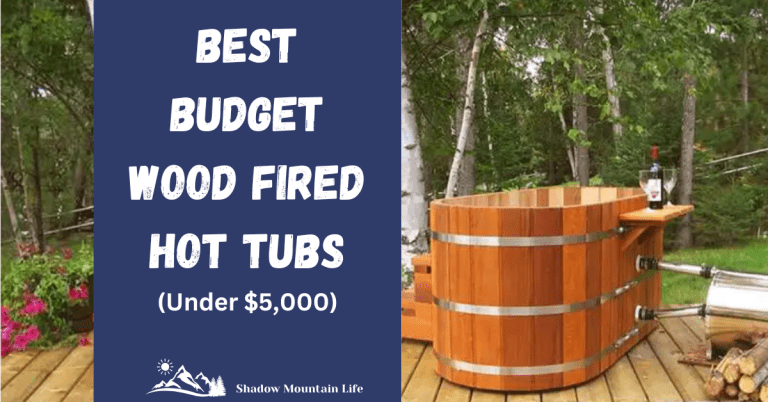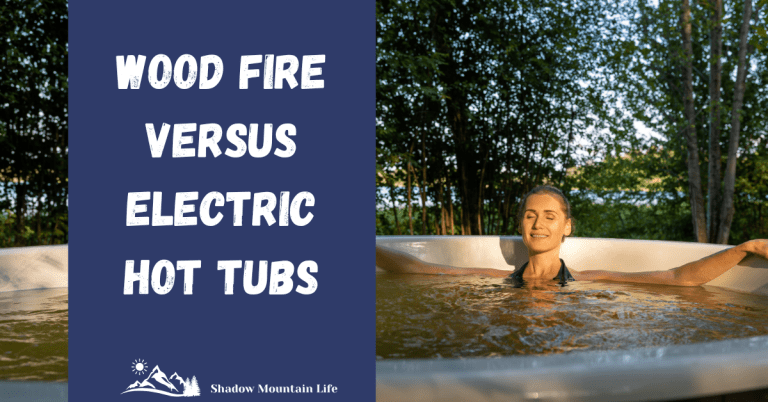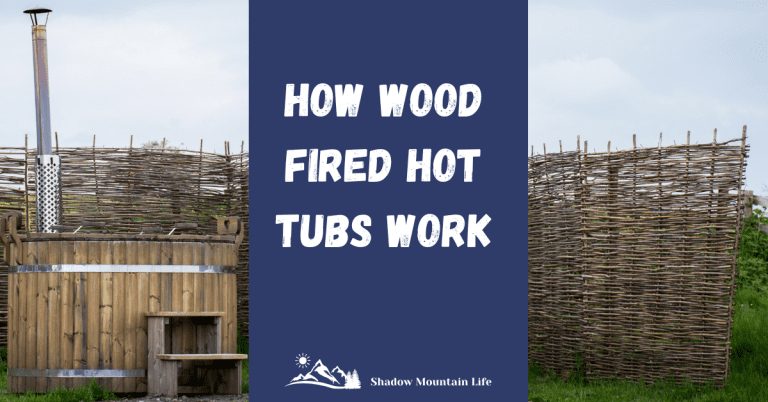Discover the Magic of Traditional Nordic Wood-Fired Hot Tubs and Spas
Imagine soaking in a steaming wood-fired hot tub while surrounded by a snowy Nordic landscape—a tradition that has transcended centuries. Nordic spas and wood-fired hot tubs are more than just a way to unwind in hydrotherapy; they are deeply rooted in cultural practices, fostering wellness, connection, and respect for nature. In this article, we’ll take a look into the history, cultural significance, and rituals surrounding these iconic hot tubs.
Medical Disclaimer: We are not doctors. The health information in the article is for informational and educational purposes only. Please consult your doctor or other healthcare professional when making medical decisions.
Affiliate Disclaimer: We may make a commission if you purchase something through our links. Thank you!

The Origins of Traditional Nordic Wood-Fired Hot Tubs
Let me paint a picture for you: a small, snow-covered village nestled in the rugged Nordic landscape, where the people are as hardy as the seasons they endure. Imagine the crackle of a fire heating a wooden tub filled with steaming water, set against the backdrop of towering pines. That scene isn’t just a romantic notion; it’s a glimpse into the origins of Nordic wood fire hot tubs. These iconic tubs weren’t created for luxury—they were born from necessity and shaped by the environment.
The story of Nordic wood-fired hot tubs goes back centuries, to a time when surviving harsh winters meant using every available resource efficiently. The cold, long winters made it essential to find ways to stay warm and soothe aching muscles from hard physical labor. Villagers would build wooden tubs using local timber, a natural material that was both abundant and insulating. A fire pit or wood stove was positioned to heat the water, turning these tubs into an oasis of warmth amid freezing temperatures.
The concept wasn’t just about relaxation—it was also deeply practical. In those days, bathing in Nordic countries wasn’t the frequent ritual we know today. Water was difficult to heat in large quantities, so gathering the family or community around a single hot tub became a shared event. It was a space for storytelling, bonding, and occasionally hashing out community decisions. I like to imagine it as a kind of old-world “conference room,” but with a lot more steam and laughter.
What’s fascinating is how these tubs fit seamlessly into the Nordic philosophy of living harmoniously with nature. Heating water with wood—a renewable resource—aligned perfectly with the sustainable practices that were simply a way of life. The tubs themselves were often carved from wood like cedar or spruce, chosen for their durability and natural resistance to rot. This wasn’t just about creating a functional hot tub; it was about craftsmanship, tradition, and a deep respect for the land.
Of course, things weren’t always perfect-sometimes the fire would scorch the wooden tubs, or the water wouldn’t heat evenly. Can you imagine the frustration of waiting hours for a soak, only to step into lukewarm water? But the Nordic people, known for their resourcefulness, refined their methods over time. They added more efficient stoves, improved insulation techniques, and even integrated the practice into their beloved sauna traditions.
It’s incredible to think that something born out of practicality and harsh conditions has evolved into a symbol of relaxation and wellness. Today’s Nordic wood-fired hot tubs carry the same essence of simplicity and connection to nature, even if they’ve been modernized a bit. Every time I hear the crackle of a wood fire or catch a whiff of cedar; I can’t help but feel connected to those early Scandinavian tub-builders who knew the value of slowing down and soaking in the moment—literally.
So, the next time you’re in a wood hot tub, think about how this seemingly simple luxury is steeped in history. It’s not just a tub of hot water; it’s a tradition that has weathered centuries, rooted in the ingenuity and resilience of the Nordic people. And honestly? That makes the experience even warmer.

The Cultural Significance of Nordic Spa Traditions
Hot tubs in Nordic culture are more than a place to relax—they’re a reflection of the region’s deep-rooted values of community, simplicity, and connection with nature. From the earliest days, these wood-fired hot tubs served as communal gathering spaces, offering warmth and respite from the cold, harsh winters. Whether it was a family soaking together after a long day of labor or villagers sharing stories under a starlit sky, these tubs became symbols of togetherness and tradition.
Much like the sauna, hot tubs provided a space where people could set aside social hierarchies and connect on a human level. Conversations flowed as easily as the steam rising from the water, often mixing humor, wisdom, and storytelling. In many ways, these moments reinforced the sense of community that is so central to Nordic culture.
Nature also plays a huge role in this tradition. These hot tubs are often placed outdoors, emphasizing harmony with the environment. Soaking in a steaming tub surrounded by forests or under the aurora borealis creates a profound sense of grounding—a reminder of the natural beauty that shapes life in this part of the world.
Even today, the cultural significance remains. Many Nordic families and friends continue to gather in hot tubs to celebrate milestones, embrace seasonal traditions, or simply unwind together. The wood-fired tub stands as a quiet yet powerful symbol of Nordic life: simple, intentional, and deeply connected to people and nature. So when you step into one, you’re not just experiencing a hot soak—you’re immersing yourself in a tradition of warmth, community, and balance.

Building a Traditional Nordic Wood Fired Hot Tub
Building a traditional wood-fired hot tub isn’t just a project—it’s a journey rooted in craftsmanship, simplicity, and a connection to nature. These tubs were traditionally made using locally sourced materials, combining function with natural beauty. The process may seem daunting, but with patience and care, it can be a deeply rewarding experience.
The first step is choosing the right wood. Cedar, spruce, or larch are often used, as these woods are naturally resistant to water and rot. The tub is typically constructed from vertical planks tightly fitted together, sealed with natural materials like flax or hemp to ensure a watertight design. A snug fit is critical—not only for functionality but to honor the tradition of quality craftsmanship passed down through generations.
Next comes the heating mechanism. A wood-fired stove is the heart of the tub, usually placed either inside or outside depending on the design. Internal stoves heat the water quickly but require more attention to safety, while external stoves allow for more space in the tub and easier temperature control. The fire heats the water through convection, so proper placement of the stove and pipes is essential for even heat distribution.
You can build your own tub and then just buy an external firebox like the stoves from Northern Lights.
Positioning the tub in harmony with its surroundings is a key principle. Place it outdoors, ideally near a natural setting like a forest, lake, or mountain view.
While modern conveniences like pre-made kits exist, building a traditional wood-fired hot tub by hand offers a unique sense of accomplishment. Every step, from crafting the wooden planks to lighting the first fire, connects you to centuries of tradition and the simple joys of life.
Rituals and Practices Associated with Hot Tub Use
In Nordic culture, using a wood-fired hot tub is more than just soaking—it’s a cherished bathing ritual that blends relaxation, connection, and mindfulness. These practices, passed down through generations, transform a simple hot tub session into a deeply enriching experience.
One common ritual is to pair hot tub use with a sauna session or cold plunge. Starting with a sauna or steam room warms the body from the inside, while a cold dip in a nearby lake or snowbank invigorates the senses. The hot tub serves as the perfect balance, soothing muscles and fostering relaxation. This cycle of heat and cold, known as contrast therapy, is central to Scandinavian wellness traditions.
The use of natural elements enhances the eco-friendly experience. Herbs like birch leaves, juniper, or chamomile are often added to the water for their soothing properties and pleasant aroma. Some families even prepare a hot drink, like herbal tea or mulled wine, to enjoy while soaking—an added layer of comfort during colder months.
Finally, there’s a mindfulness to the entire process. Spa rituals like lighting the wood stove, waiting for the water to heat, and stepping into the steaming tub under an open sky—it all encourages slowing down and appreciating the moment.
Whether used for physical recovery, mental clarity, or social bonding, these rituals make Nordic hot tub practices about more than relaxation—they’re a celebration of life’s simple pleasures, deeply rooted in tradition and harmony with nature.

Wellness Benefits of Nordic Hot Tubbing
Nordic hot tubbing isn’t just a relaxing experience—it’s a practice packed with wellness benefits for both the body and mind. Rooted in centuries-old traditions, this activity leverages the healing power of warm water, natural materials, and intentional relaxation.
Physically, soaking in a wood-fired hot tub can ease muscle tension and promote circulation. The warmth of the water dilates blood vessels, improving blood flow and helping the body deliver nutrients to sore muscles. This is especially beneficial after physical exertion or long, cold days. The buoyancy of the water also relieves pressure on joints, making it ideal for those with arthritis or chronic pain.
Beyond the physical, Nordic hot tubbing supports mental wellness. The combination of warm water, crackling wood fires, and serene natural surroundings helps reduce stress and encourage mindfulness. It’s like a reset button for your mind, providing a quiet moment away from daily distractions.
The practice of alternating between hot tubs, Finnish hot saunas, and cold plunges, a Nordic tradition, offers additional health benefits. This contrast therapy is said to boost circulation, improve immune function, and leave you feeling revitalized in your bathing experience.
Lastly, there’s the communal aspect. Gathering with family or friends in a hot tub fosters connection, laughter, and deep conversations. Social bonding, paired with the calming effects of the water, creates a unique sense of well-being.
Whether you’re seeking physical recovery, stress relief, or a way to reconnect with loved ones, Nordic hot tubbing offers a holistic approach to wellness. It’s not just a soak—it’s a deeply restorative ritual that’s as beneficial for your spirit as it is for your body.
Modern Adaptations and Global Influence
Nordic wood-fired hot tubs have evolved from their rustic origins into a global wellness trend, blending tradition with modern innovation. While the classic design of wooden tubs heated by fire remains timeless, contemporary adaptations have made them more accessible and versatile for people worldwide.
One of the biggest modern changes is the incorporation of advanced materials. While traditional tubs were crafted from cedar or spruce, many modern versions use aluminum, stainless steel, or fiberglass for enhanced durability and easier maintenance on the inside of the tub.
Additionally, wood stoves are now more efficient, with internal or external heaters and insulated designs ensuring quicker heating to reach the desired temperature the use of less firewood.
Globally, the influence of Nordic hot tubs is undeniable. From ski resorts in the Alps to backyards in North America and Japan, people have embraced the idea of outdoor hot tubs as a way to relax, connect with nature, and prioritize wellness. The Nordic practice of alternating between hot and cold therapy has even inspired modern spa treatments around the world.
Despite these innovations, the essence remains the same: simplicity, connection, and a deep respect for nature.

Tips for Embracing Traditional Nordic Wood-Fired Hot Tub Culture at Home
Bringing Nordic hot tub culture into your home isn’t just about installing a wood-fired tub—it’s about embracing the lifestyle and traditions that come with it. Here are some tips to create an authentic experience.
1. Choose Natural Materials
Opt for a wood-fired hot tub made of cedar, spruce, or larch for a rustic, traditional feel. The scent of the wood adds to the sensory experience, and these materials blend beautifully with outdoor spaces.
2. Embrace Outdoor Living
Position your hot tub in a natural setting, like a backyard with trees or a garden. Nordic culture emphasizes connecting with nature, so try to create a space that encourages tranquility and mindfulness.
3. Incorporate Rituals
Adopt traditional practices like alternating between hot and cold. Pair your bath with a cold plunge or a refreshing rinse with cool water to invigorate the body and boost circulation.
4. Use Natural Additions
Enhance your soak with Nordic-inspired touches, like adding birch leaves, essential oils, or herbs to the water. These elements can elevate relaxation and provide subtle aromatherapy.
5. Prioritize Connection
Hot tubs are about more than relaxation—they’re spaces for bonding. Use yours as an opportunity to gather family or friends, share stories, and disconnect from technology.
6. Keep It Simple
The essence of Nordic hot tub culture is simplicity. Focus on creating an environment that promotes slowing down, appreciating the moment, and savoring the warmth.
With these tips, you can transform your hot tub into more than just a feature of your home—it’ll be a retreat steeped in Nordic tradition and wellness.
Nordic wood-fired hot tubs represent more than just relaxation—they embody centuries-old traditions of wellness, connection, and harmony with nature. By embracing these practices, we can experience the benefits of slowing down and reconnecting with the natural world. Whether you’re soaking under the stars in a rustic tub or incorporating Nordic-inspired rituals at home, the essence of this culture can transform your wellness journey.







